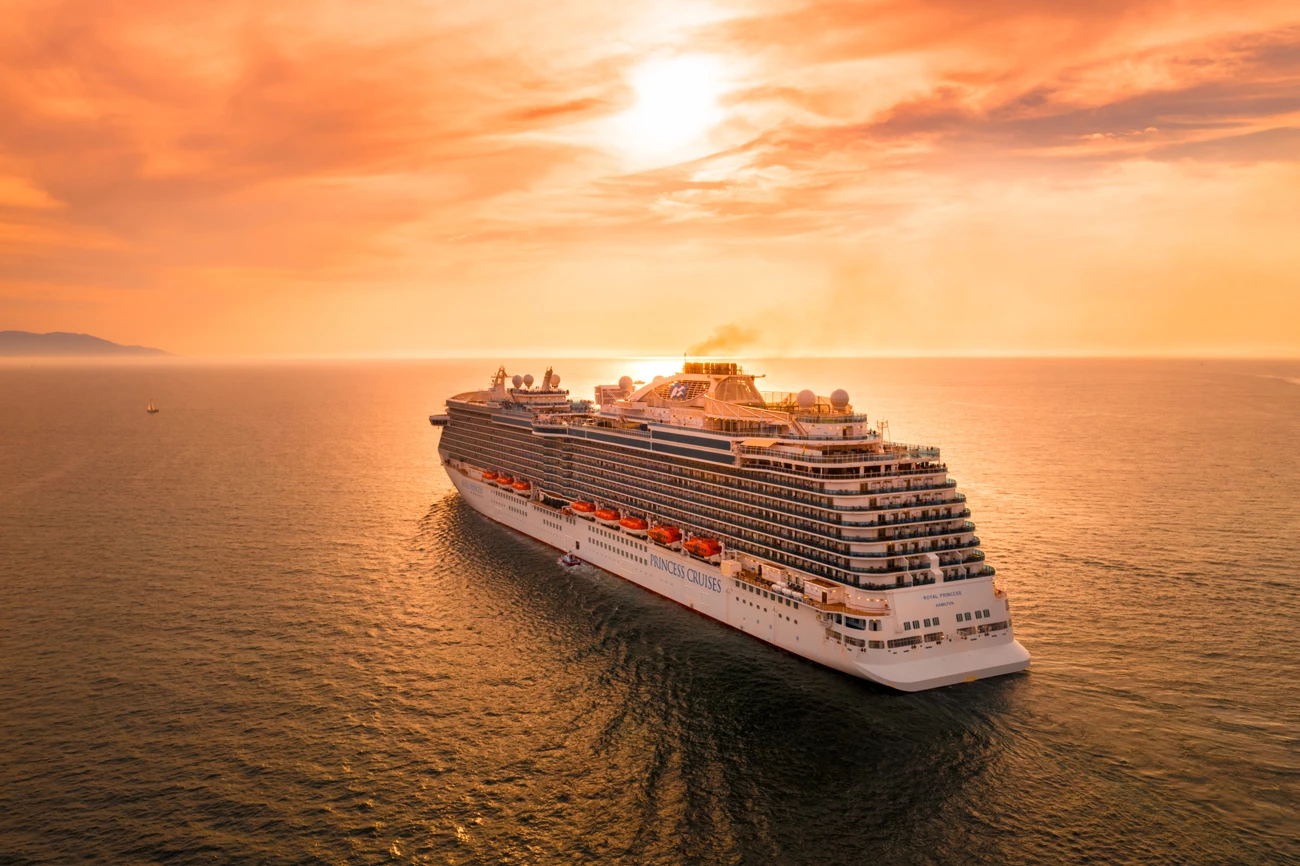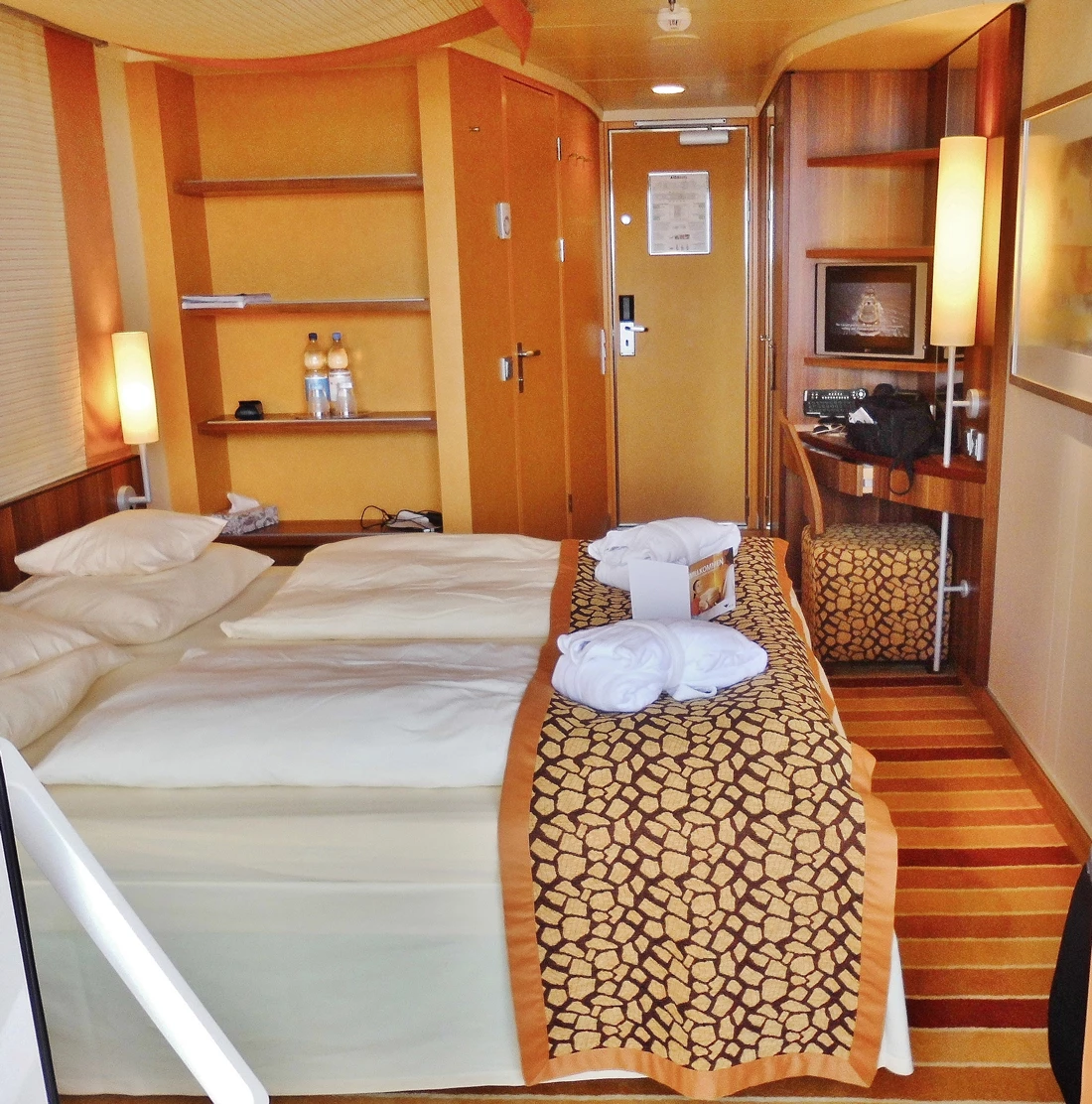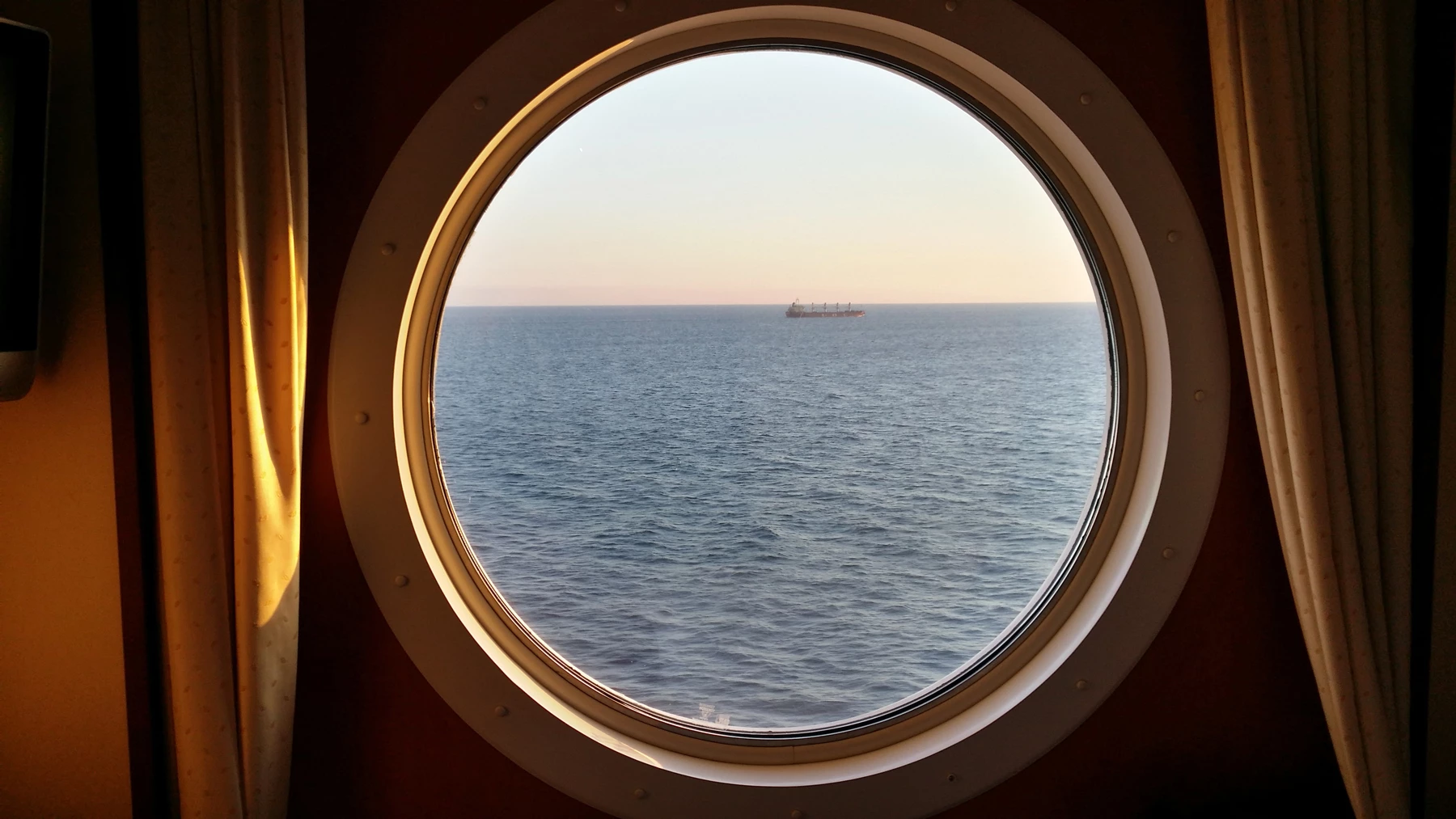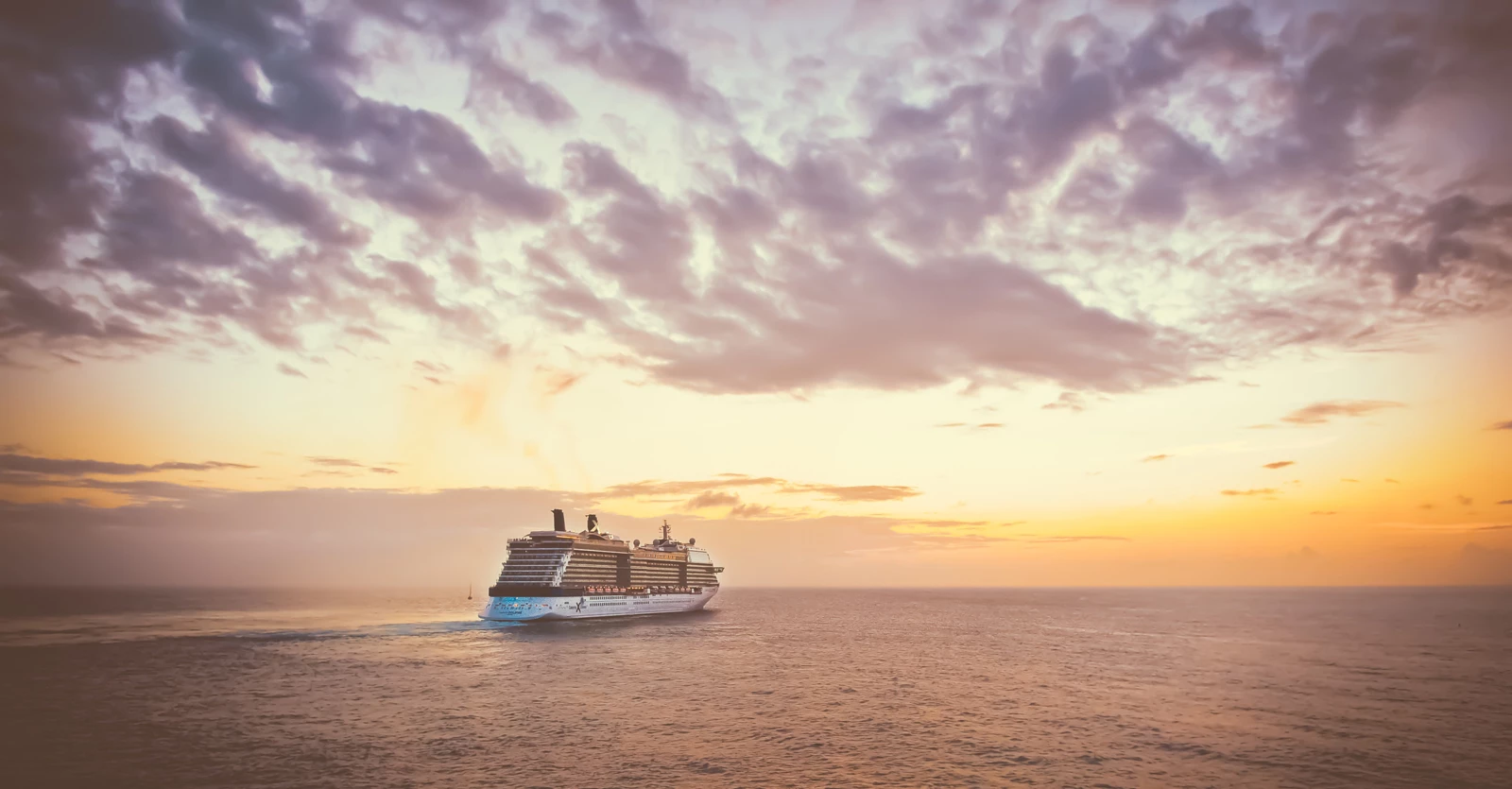06/09/2019 | Category: Travel Insurance

Booking your next adventure on a cruise ship is an exciting experience. There’s nothing better than deciding on your route, booking your shore excursions and choosing your cabin.
Selecting a cabin on a cruise ship isn’t that dissimilar to choosing a normal hotel room. You’ll still need to think about things like your budget, if you’d like a standard room or a suite, and whether you want a balcony or not. You may even want to consider which amenities you’ll be closest too, such as pools, spas and restaurants.
But there’s one major thing that differs from hotels on dry land – you’ll have to consider wherebouts on the ship you want to be, especially if you’re prone to sea sickness.
No one can predict the weather on your trip, so it’s important to ensure you’re covered with adequate cruise travel insurance just in case you hit stormy seas and encounter delays.
So, what exactly should you know before making the final call on a cabin?
Cruise jargon explained
For those less accustomed to the lingo often used by cruise companies to describe different types of cabins and features, we’ve broken it down to make your choice a little bit easier.
Cabin grades and what’s included:
Inside: This room is exactly as it suggests, inside the ship, and it doesn’t offer a window. This is the smallest and cheapest grade of cabin, with all the essential amenities including a bed, storage and a bathroom, but little else.
Outside: Similar in layout and size to inside cabins, the key difference is that outside options offer a window with the benefit of a view.
Balcony: Increased space is an advantage in balcony rooms. This cabin comes with a balcony or veranda that gives you access to the outside without having to a visit a public deck area. Depending on the cruise line, rooms may vary in size from the very small to the very large.
Suite: Generally, the most luxurious and largest of cabins, suites usually offer separate sleeping and lounge areas as well as a number of perks and additional amenities. Some cruise lines offer duplexes or lofts, so more than just living and sleeping spaces. Some even offer private hot tubs, pianos, walk-in wardrobes and deluxe bathrooms. Mini suites, which most lines offer, are usually larger versions of the other cabin options available.
Location, location, location:
Bow: The front of the vessel, some say because she bows over the sea
Mid-ship: The middle region of the ship, and the largest area on the vessel
Aft: The rear of the ship (despite the name not giving too much away)
Starboard: When facing forward, this is the right-hand side of the ship
Port: The left-hand side of the ship when the vessel is facing forwards
Bottom deck: Lower on the ship, with restricted views at times
Top deck: Higher on the ship, with better views
What is the best cabin position on a cruise ship?
Choosing the location of your cabin on a cruise is an important decision that can result in a few different outcomes. Regardless of which area of the ship your cabin resides in, you could still face feeling sea sick or be disrupted by noise. In more positive instances, you might find yourself bagging a great view and snoring like a baby with the sea gently rocking you to sleep.
When deciding which cabin is best for you, you’ll want to consider several factors before diving in and making the final call. We’ve broken down the key points for deliberation to help you choose which cabin would be best for your personal preferences.
Stability and location
Are you affected by sea sickness? The lower mid-ship rooms might be best for you. The more central and lower you are, the less likely you are to suffer from the roll and sway that is inevitable with exploring by sea. Think of a ship as a seesaw, moving up and down: the front and rear will experience the greatest movement. In the middle and lower parts of the ship, you’ll benefit from increased stability that limits heightened levels of movement, reducing the feeling of rolling and swaying.
Avoiding noise
If you’ve planned for your cruise holiday to be peaceful, allowing you to retreat to the sanctuary of your cabin to relax, then you may want to avoid particular locations. The pool on the upper decks is often a cause of noise, with people regularly taking advantage of the sunshine, moving deck chairs and carrying on with the general shenanigans that are all part and parcel of pool time. Surprisingly, some of the nicest and most expensive rooms are located here.
Of course, this isn’t the only area that generates noise. Choosing a cabin that is both below and above other cabins will provide a buffer from the noise of service areas such as bar and show lounges, but they’ll also come with more foot traffic, thus creating additional noise. You may also find increased noise levels at the lower, rear cabins due to engines and the anchor, or at the lower front area due to thrusters depending on the size of the ship.
Light and views
If you’re booking an outside or balcony room, it’s likely because you want natural and a great view. But not all outside or balcony rooms are created equal. Some fall into the obstructed-view category, meaning the quality of your view will differ room by room. Some will only feature a partial obstruction, leaving plenty of space to enjoy the passing vistas, but others have a view that’s restricted by lifeboats. These rooms usually come at a cheaper price, but it’s worth having a quick read through the reviews online before booking.
Distance
How far you are from certain amenities might also play a role in determining where you want to book your cabin. Sunseekers may prefer a room on the upper decks to place them close to the pool and sun decks, while those looking to spend their time watching the array of entertainment on offer may opt for a cabin closer to the show lounges and bars.
Then again, some travellers might be looking to distance themselves from these locations for a more tranquil experience at sea. Whichever it is, it’s worth considering when choosing your room.
Which is the best side of a cruise ship to be on?
Starboard or port, whichever you choose, is likely to be influenced by your direction of travel, and whether you are crossing vast expanses of ocean or moving around between islands. It will also come into play for one-way journeys, unlike roundtrips which will allow you to experience both open seas and coastlines along your voyage.
Of course, if you’ve got an inside cabin then neither option is better than the other, as this choice is mostly down to what view you want to experience.
Is it better to be aft or forward?
Perhaps the mid-ship isn’t for you, whether because of price, proximity to certain amenities or for another reason entirely. This leaves you to choose from a room at the front or aft of the vessel. So, which is better?
There are a few things to consider here. Firstly, how much movement you are happy to experience and how easily do you feel seasick? For those with stomachs made of steel, the front might not be a problem. The reason being that the front of the boat is where the ship cuts through the waves, causing more movement than anywhere else. Of course, some destinations will be far less affected by waves due to sheltered, calmer waters such as the Mediterranean or the Caribbean. The aft or rear of the ship is the next best location after mid-ship, as it experiences less movement and would be better suited to those who are prone to seasickness.
The second factor to consider is based on whether you decide on a room with a balcony. Some travellers may enjoy the end-of-the-world feeling they get by looking out the rear of the ship with nothing but endless seas on the horizon. This is unique to the rear of the vessel, but mostly applies to those opting for outside or balcony rooms.
Are balcony rooms worth it on cruises?
Wondering whether an outside room will be enough, or whether you should fork out for a balcony? Firstly, ask yourself what locations will your cruise be covering. If you’re heading on an Arctic cruise or travelling in the cooler months, you may find little use for a balcony, and find an outside room is more than adequate. On the other hand, if you’re enjoying a sunny getaway and looking to soak up as much of that vitamin D as you can, a balcony is a great option if it suits your budget.
A balcony is also a great idea if you’re the kind of traveller that enjoys their own space. If you’d prefer to stay away from the crowds, kick back and read a book on your own, or enjoy a room-service meal outdoors, these are all great reasons to support choosing a cabin with a balcony.
Of course, if you are the type of holiday-maker who uses the room as a purely functional space for sleeping and showering, then you may not find splurging for a balcony worthwhile. If you’re planning to spend your time on the sun decks, by the pool or maximising time in the show lounges, restaurants and bars, you might find you’re quite content with all those spaces and you don’t need any extra.
And how about choosing where on the ship your cabin should be if you’re looking at a balcony? Well, if you want to get endless views over the wide-open ocean, the aft is great. Although it is worth noting that these can be angled on some ships, so cabins on the decks above can look over onto your balcony. Some suites also offer corner rooms, which gives you the best of both worlds. Ultimately, budget and usage of the balcony will be the determining factor on whether you find it a worthwhile investment.
What does guaranteed cabin mean on a cruise?
A guaranteed cabin doesn’t provide certainty on the location of the cabin, but you will receive a cabin of the same grade or higher. Unfortunately, booking a guaranteed cabin on a ship means that if you’re prone to feeling seasick, want a particular view or to be close to certain amenities, you might not be located where you hope as you have no say in the cabin’s position or deck.
Despite this there is an upside when booking a guaranteed cabin, including a reduced price a lot of the time, and the chance of a room upgrade. Guaranteed cabins will be confirmed prior to your sailing date, generally only a few days or weeks before you depart. If you prefer certainty, this may not be the most suitable option for you. However, if you’re flexible with your location, then this may be the perfect chance to bag a great cabin rate or score a free upgrade if you’re lucky.
Protecting your trip with cruise insurance
As soon as you’ve booked your cruise holiday, you should consider investing in specialised cruise travel insurance. Much like regular travel insurance, it also covers you for a few more cruise-specific occasions that are associated with life on the high seas.
Sometimes, there are things that happen on a cruise that just don’t happen with other methods of travel. Whether it be a missed port due to unfavourable weather, or being confined to your cabin due to illness, these are all situations you can make claims for. That’s where cruise-specific cover counts.
Policies can protect everything from medical cover and personal belongings to delayed departures and cancellations or curtailments. Insurance Choice offers a range of cruise travel insurance policies that can be tailored to suit the needs of you and your fellow travelling companions, giving you some comfort that things will be taken care of should events not quite pan out the way you planned.
Get in touch with Insurance Choice today to get a quote for specialised cruise travel insurance – because sometimes it’s not all plain sailing.
